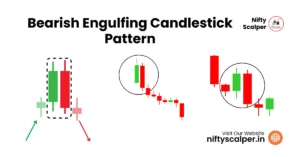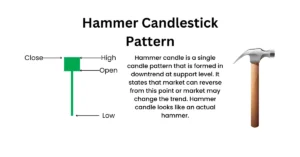Candlestick patterns are essential tools in technical analysis, offering insights into market trends and potential reversals. One such pattern, the Harami, is particularly useful for identifying potential trend reversals and indecision in the market. In this blog, we’ll explore the Harami candlestick pattern in detail, covering its definition, identification, significance, types, trading strategies, advantages, disadvantages, and limitations. Let’s dive in.
Table of Content
What is a Harami Pattern?
A Harami Candlestick Pattern is a two-candlestick formation that signals a potential reversal or indecision in the market. The term “Harami” means “pregnant” in Japanese, reflecting the pattern’s appearance, where the second candle is contained within the body of the first candle. There are two types of Harami patterns: Bullish Harami and Bearish Harami.
How to Identify a Harami Candle
To identify a Harami pattern, look for the following characteristics:
- First Candle: A large candle, either bullish (for Bearish Harami) or bearish (for Bullish Harami), indicating the prevailing trend.
- Second Candle: A smaller candle with a body that is completely contained within the body of the first candle. The second candle can be either bullish or bearish, but its body must be smaller than the first candle’s body.
Significance of the Harami Pattern
- The Harami pattern is significant because it highlights potential changes in market sentiment. The first large candle represents the dominant trend, while the smaller second candle indicates indecision or a loss of momentum. This pattern can signal a potential reversal or a pause in the current trend, making it a valuable tool for traders.
Types of Harami Candles:
There are two main types of Harami patterns:
- Bullish Harami:
- First Candle: A large bearish candle.
- Second Candle: A smaller bullish candle contained within the body of the first candle.
- Significance: Indicates a potential reversal from a downtrend to an uptrend.
- Bearish Harami:
- First Candle: A large bullish candle.
- Second Candle: A smaller bearish candle contained within the body of the first candle.
- Significance: Indicates a potential reversal from an uptrend to a downtrend.
How to Trade the Harami Candlestick Pattern in Stock Market :
When trading the Harami pattern, consider these strategies:
- Confirmation: Wait for the next candlestick to confirm the reversal. A strong bullish candle following a Bullish Harami or a strong bearish candle following a Bearish Harami can validate the anticipated move.
- Volume Analysis: Higher trading volume on the confirmation day adds weight to the pattern, increasing the likelihood of a sustained move in the indicated direction.
- Entry Point: Enter the trade near the close of the confirmation candle.
- Risk Management: Use stop-loss orders appropriately to manage risk. Place stops below the low of the Bullish Harami or above the high of the Bearish Harami to protect against false signals.
Advantages & Disadvantages
Advantages:
- Early Reversal Signal: Provides an early indication of potential trend reversals.
- Easy to Identify: Simple to spot on candlestick charts.
- Indecision Indicator: Highlights market indecision, which can precede significant price movements.
Disadvantages:
- False Signals: May produce false signals, especially in volatile or ranging markets.
- Context-Dependent: Its reliability depends on the preceding trend and market conditions.
Limitations and Risks :
While the Harami pattern is a useful indicator, it has limitations:
- Market Conditions: In highly volatile markets, the pattern may appear frequently, reducing its reliability.
- Need for Confirmation: Without confirmation, the pattern can lead to incorrect predictions.
- Over-Reliance: Relying solely on Harami patterns without considering other indicators can result in poor trading decisions.
Conclusion:
The Harami candlestick pattern is a valuable tool for traders, indicating potential trend reversals and market indecision. By understanding how to identify and interpret Harami patterns, and considering their advantages and limitations, traders can enhance their technical analysis and make more informed trading decisions. Remember, while Harami patterns are informative, they should be used in conjunction with other analysis tools to mitigate risks and improve accuracy.
By leveraging the insights provided by Harami candlesticks, traders can better navigate the complexities of the financial markets and improve their trading outcomes.
Remember, successful trading is not just about mastering Harami Pattern; it’s about combining them with Risk Management, Discipline, and Continuous Learning to get the best results in the stock market.




